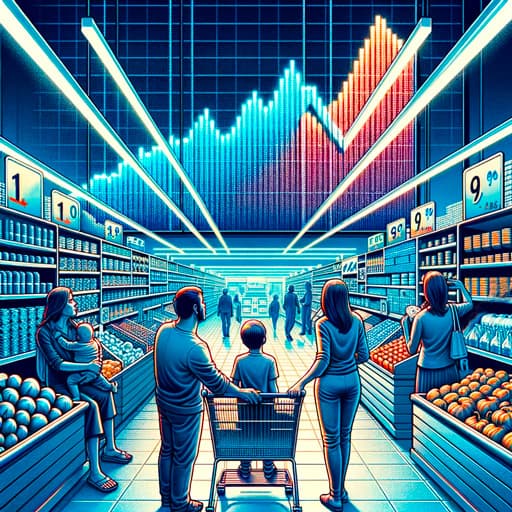- Published on
How Inflation Affects Prices? 📈
- Authors
- Name
- Promoscore Team
- @promoscore
In this article we are going to present one of the puzzles in understanding of price formation. This is a phenomenon that everyone hears and every country is struggling with this, so let's see what it actually is, this scary word - inflation.

Inflation is when things get more expensive over time, so your money doesn't buy as much as it used to. It's like a sneaky thief stealing the value of your money without you noticing.
When prices rise, it's because businesses have to pay more for stuff like materials, workers, and energy. To make up for these higher costs, they charge more for what they sell. This means you end up paying more for groceries, clothes, and everything else you need.
Inflation, the rise in prices over time, is something to keep in mind when looking at how much things cost from one year to the next. It's like a background noise that can affect how far your money goes. Let's say you bought a toy last year for 10 euro, but this year it costs 12 euro. At first glance, you might think it's just a 2 euro increase. But if you consider inflation, you realise that 12 euro today might be worth the same as 10 euro was last year because prices have gone up.
Inflation can make a big difference in how we see prices changing over time. That's why it's essential to include it when comparing prices from different periods and years. It helps us understand if things are really getting more expensive or if it's just the effect of inflation. And remember, tools like Promoscore include inflation in their algorithm for calculating prices, making it easier for us to see the real value of promotion.
There is one more thing to remember about inflation. You need to remember if inflation is 10% this year and 15% next year, prices will keep going up not just from their original cost but also from the increased cost of the previous year, making things more expensive each year. It's important to keep in mind that when looking at inflation charts, trends might seem to suggest prices returning to previous levels after fluctuations; however, with each year of inflation, prices continue to rise. For instance, if the inflation rate was 10% in the first year, 15% in the second year, and then back to 10% in the third year, it might seem like prices returned to the initial level. However, due to compounding effects, the price level in the third year is significantly higher than in the first year, making it increasingly challenging to restore prices to previous levels with each successive year of inflation. Therefore, be vigilant when looking at such data.
Understanding inflation helps us all make better decisions about our money and the economy. So next time you hear about prices going up, you'll know what to pay attention to!
Tips
In Promoscore, we use the official EU inflation rate to calculate the Promoscore so that a price from year X could be compared to a price from year X-1!